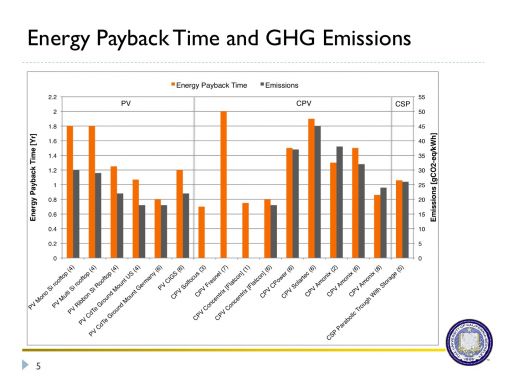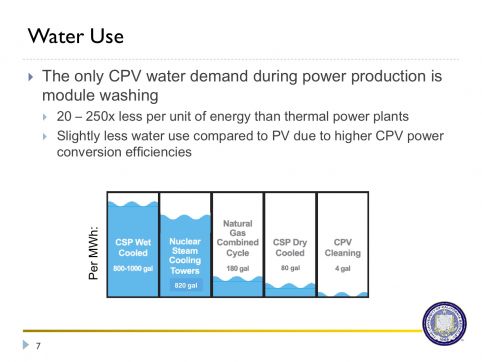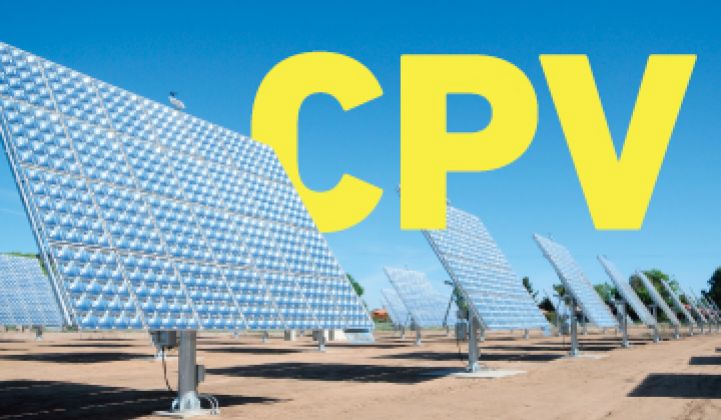The issue of embedded energy or energy payback time (EPBT) is moving more to the forefront in the world of renewable energy. Energy payback time is the time in years it takes for a power generator to produce as much energy as it takes to create and dispose of the generator.
The CPV Consortium and UC Berkeley just released a study that finds that concentrator solar systems "have distinct environmental advantages as compared with other energy technologies, in most cases using less land, water, and materials than other solar technologies."
"CPV only looks better with regards to energy payback time," according to James Nelson, Ph.D. candidate at UC Berkeley.
CPV's higher power and higher efficiency also means that it will result in less land usage. While BrightSource Energy's Ivanpah is turning into Mutual of Omaha's Wild Kingdom with desert tortoise "head start" programs, CPV's structure provides a little better landscape for wildlife, free of bulldozing, although it is certainly fenced.
Thin film solar technology boasts a superior carbon footprint compared to energy-intensive crystalline silicon solar modules. First Solar's CTO, Dr. David Eaglesham, said that thin film can claim the shortest EPBT by a large measure -- First Solar's EPBT is 0.8 years (EPBT includes manufacturing and installation).
Nancy Hartsoch, chairman of the CPV Consortium Board is predicting an EPBT of 0.6 years for CPV.

While concentrating solar thermal (CSP) is potentially a large user of water, CPV and PV require far less water. In fact, First Solar claims that they don't wash their panels as a matter of policy, while the big three CPV vendors at this morning's meeting (Amonix, Soitec, and SolFocus) claim that panel washing, while geographically dependent, is minimal and happens only a few times per year.




